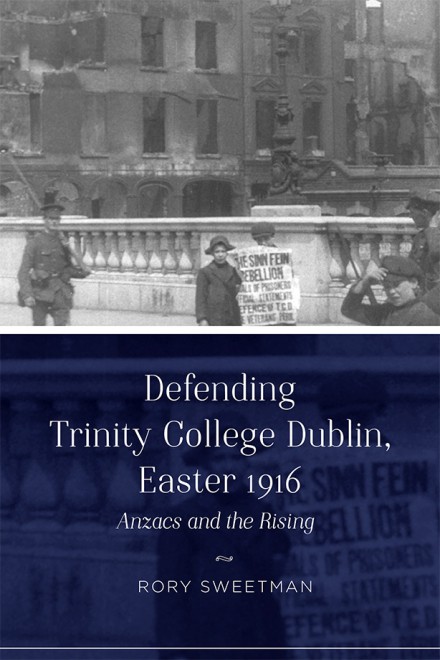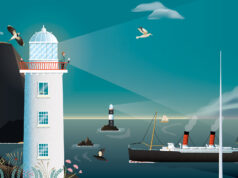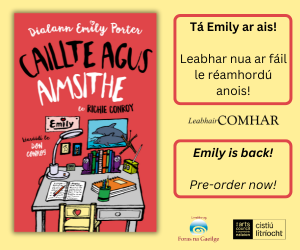Defending Trinity College Dublin, Easter 1916: Anzacs and the Rising, Four Courts Press, 978-1-84682-784-6, €19.95
Corporal Alexander Don was enjoying his holiday in Dublin. The sunny weather helped the 21 year-old New Zealander’s recovery from a bout of typhoid fever he had contracted at Gallipoli during his country’s baptism of fire in the First World War. Granted leave at Easter 1916, he decided to visit Ireland. However, as Don described in a long letter to his father, the holiday was soon to come to a very abrupt end.
On Easter Monday morning I was walking past Dublin Castle, and everything seemed all right, when a couple of shots rang out, and two Tommies, who were in front of me, fell over. I thought I must be dreaming, and went over to where they were lying, and saw that one had got it through the head and the other through the neck. Then I looked up and saw a couple of men in green uniforms and slouch huts, rifles and bandoliers, regarding me from the housetops. It was my hat that saved my life, because it seemed to puzzle them, being so very like their own, although, of course, not green.[1]
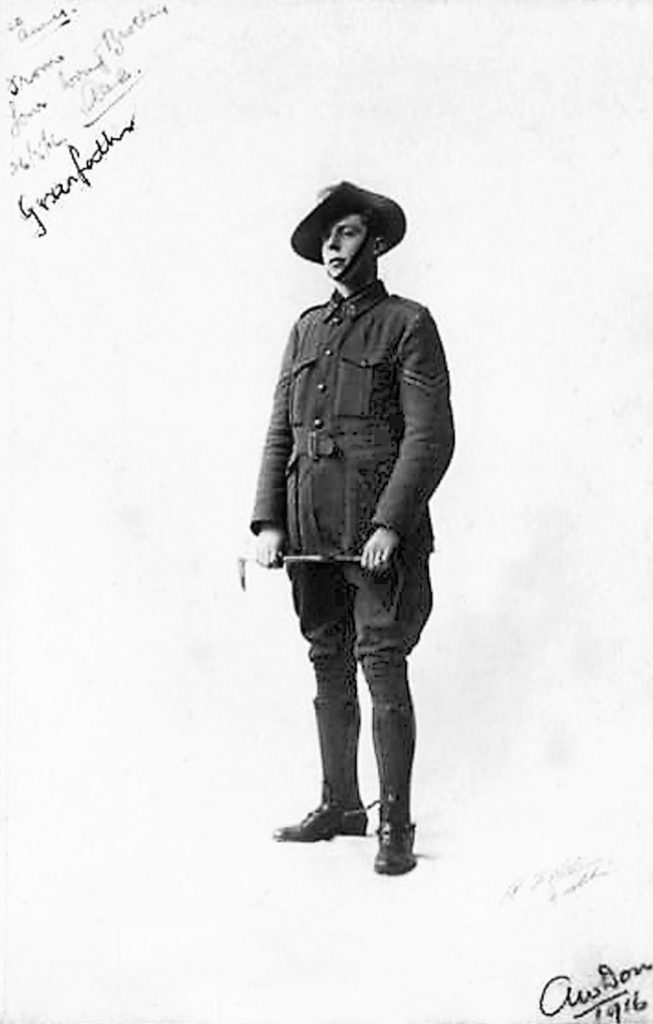
It may have been Don’s clothes as well as his slouch hat that confused the Irish Citizen Army snipers, as the uniform then worn by some New Zealand troops was a shade greener than the regular British khaki. The rebels might have thought he was one of their own company, hurrying to take his place in the garrison at St Stephen’s Green. If so, Don removed any such suspicion by immediately opening fire on them with his revolver from the next street corner.
After going up the street a little way I saw more rebels walking on [the roofs of] the houses, and only for the crowd would have been shot. Then a lot of women got round me, crying and wailing for the soldiers, whom they had seen shot before. They pushed me into a place, and I got into civilian’s clothes, as I didn’t want to stay there all day.[2]
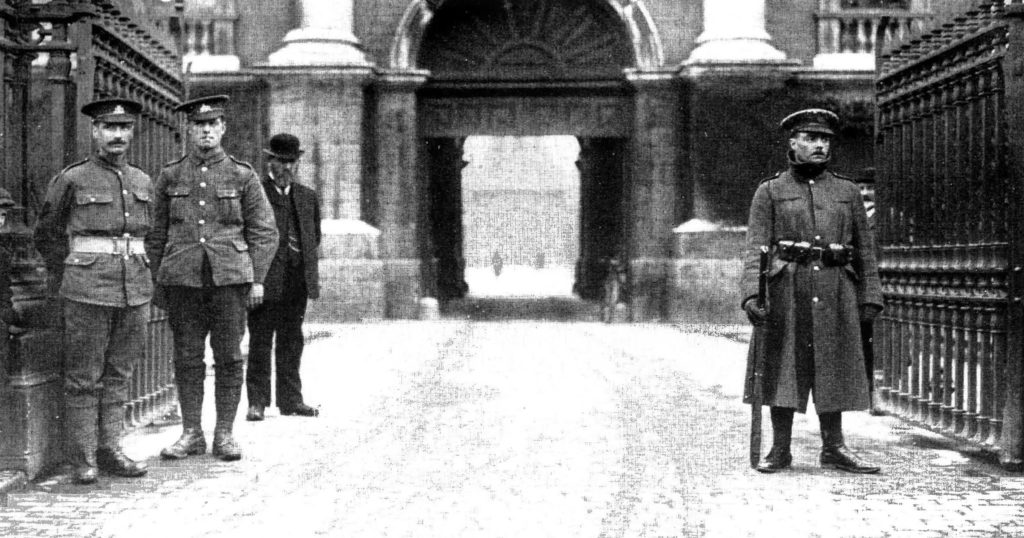
Safe from identification as a ‘Tommy,’ Don joined the throng of Dubliners who were observing the curious goings-on at St Stephen’s Green and in Sackville Street. ‘At the Post Office I saw the Commander-in-Chief, Connelly [sic], standing with folded arms in a doorway,’ Don recalled, ‘I could have shot him from the crowd, but should have got two or three into me, as rifles and green could be seen from every window.’ It was now around 2pm. ‘I was just turning round to come away when I saw two New Zealanders. They were on holiday. The rebels started shooting at them, so I told them to come along with me.’[3] The men were Sergeant Frederick Nevin and Corporal John Garland, orderlies with the New Zealand Medical Corps, who were staying nearby at Wynn’s Hotel in Lower Abbey Street.[4] The three Kiwis hurried across O’Connell Bridge to the Soldiers’ Central Club in College Street, where the proprietor told them that ‘all the soldiers had gone over to the [sic] Trinity College.’[5] They crossed the road and the porter unlocked the gates and allowed them to enter.
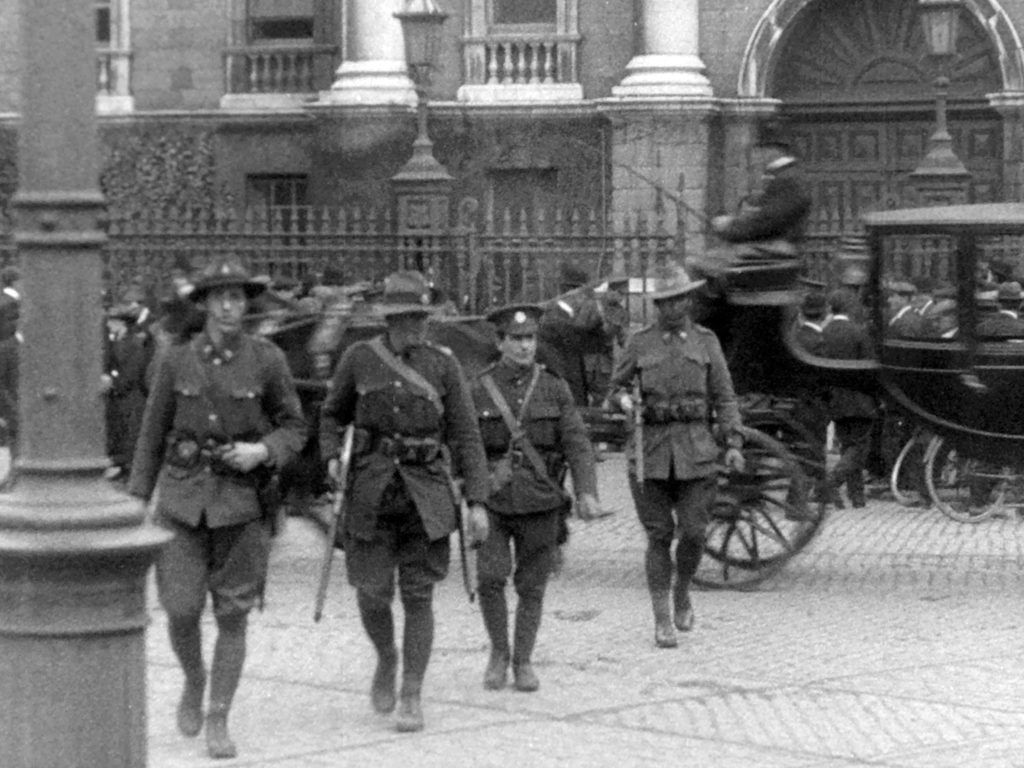
So began a week of danger and excitement, as the New Zealanders formed the core of a small body of colonial troops who defended Ireland’s oldest university from a rebel attack in the early hours of Tuesday, 25 April. Had Trinity College fallen, its 324th year may well have been its last, as nothing less than heavy and prolonged artillery fire or a long siege would have sufficed to dislodge and defeat the occupiers. The most apocalyptic vision of Trinity’s potential fate was presented by its Professor of Geology, John Joly, in an account written while the ruins of Sackville Street were still smouldering.
Was this indeed to be, perhaps, the last night of our ancient University? The question is no mere extravagance of the imagination. For so much of the very existence of so venerable a foundation is bound up with its century-old buildings, with its literary and artistic treasures, that sack and conflagration in a single night might obliterate practically all but its memory from the earth. So might perish Ireland’s most priceless treasure – the University of Berkeley, Goldsmith, Burke, Hamilton, and Lecky.[6]
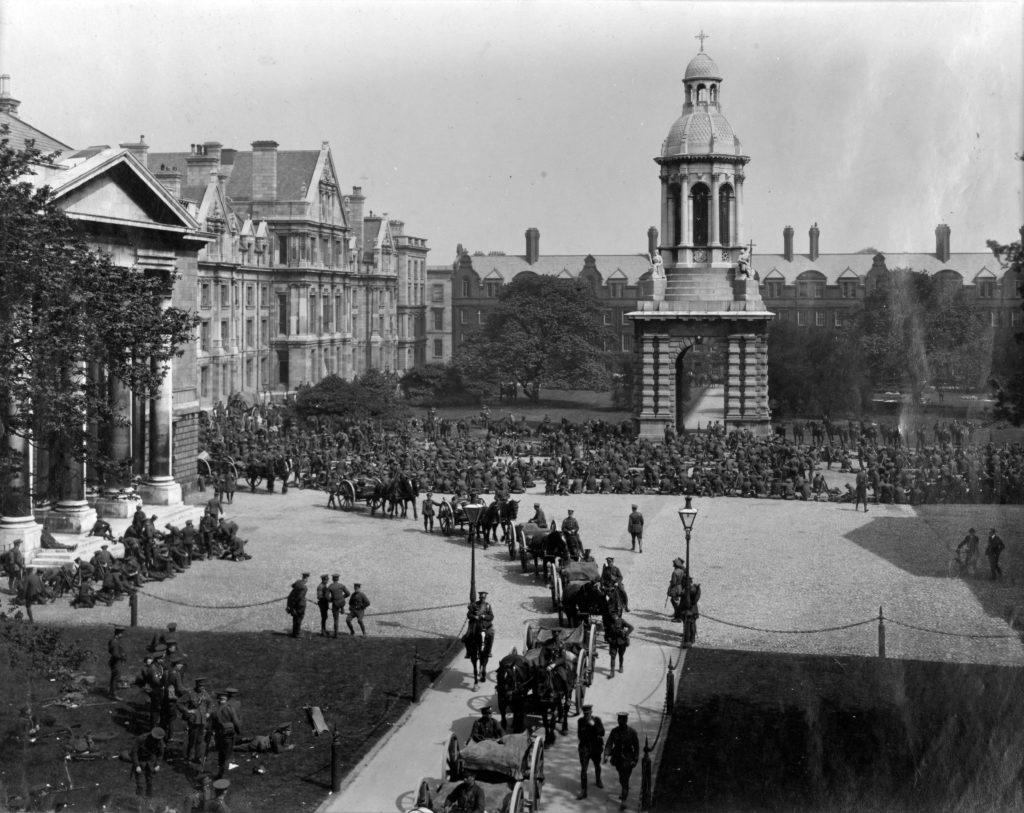
Defending Trinity College Dublin, Easter 1916: Anzacs and the Rising offers a rich new source in the shape of letters written home by the New Zealanders, all of which are reproduced in the appendices. Their contents give fresh insight into that dramatic week and help to answer questions left unasked in previous studies: how close did Trinity come to being a central battleground in the Rising? How and why did it escape this grisly fate? And – not least – what might have happened but for the intervention of the colonial troops?
Chapter one explores the historiography of the College’s defence, in which a focus on the alleged exploits of its Officers’ Training Corps (henceforth OTC) has obscured both Trinity’s vulnerability to rebel attack and the role of the colonial troops in its survival. Chapter two discusses Trinity’s troubled relationship with Irish nationalism and its manifold attractions as a rebel target. The turbulent first two days of the rebellion are the focus of chapter three, which charts how the defence of Trinity was accomplished, how haphazard and fortuitous was this process, and how near it came to disaster. Chapter four looks more closely at the colonial soldiery, especially the Anzacs, telling their personal stories, and examining the tales they sent back home concerning their Easter Week exploits. Chapter five is a counterfactual exercise, exploring what might have happened had Trinity College become an insurgent stronghold rather than ‘the main indigenous centre of resistance to the rebels.’[7] It argues that Professor Joly’s fears – while unrealised – were not unrealistic. The final chapter reveals what happened to the Anzacs and probes their motivations, refuting recent scholarship depicting them as reluctant conscripts, dragged unwillingly into a conflict that was none of their business. It attempts to put this episode of the Easter Rising into an imperial context, with Dublin as a theatre of battle in a global war.
Article by Rory Sweetman, November 2019.
- [1] Evening Star (Dunedin), 21 July 1916.
- [2] Evening Star (Dunedin), 21 July 1916.
- [3] Evening Star (Dunedin), 21 July 1916.
- [4] NZDF, personnel archives, JG Garland (3/1315); FL Nevin (3/1347), ANZ.
- [5] Auckland Star, 28 June 1916.
- [6] John Joly, Reminiscences and Anticipations, London, 1920, p.228
- [7] Padraig Yeates, A City in Wartime Dublin 1914-18, Dublin, 2012, p.105.
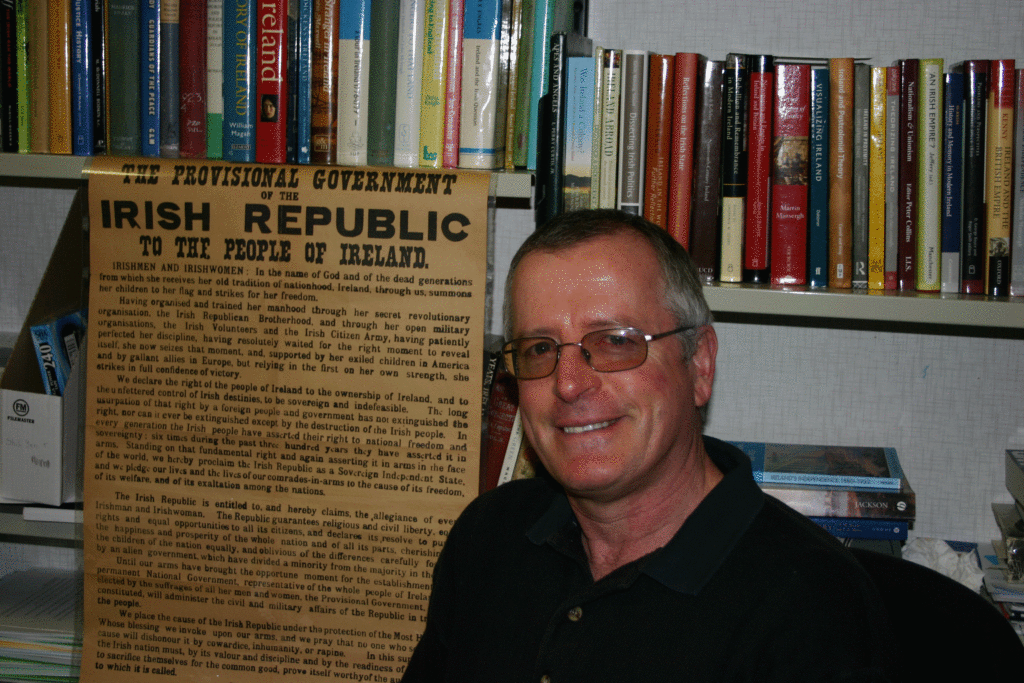
Dr Rory Sweetman is a Kildare-born New Zealander who holds history degrees from Trinity College Dublin and Cambridge University. He has published extensively on aspects of the Irish abroad and is the author of Bishop in the Dock: the Sedition Trial of James Liston in New Zealand (Dublin, 2007), which won the Sir Keith Sinclair Prize for History.
Defending Trinity College Dublin, Easter 1916: Anzacs and the Rising, Four Courts Press, 978-1-84682-784-6, €19.95









